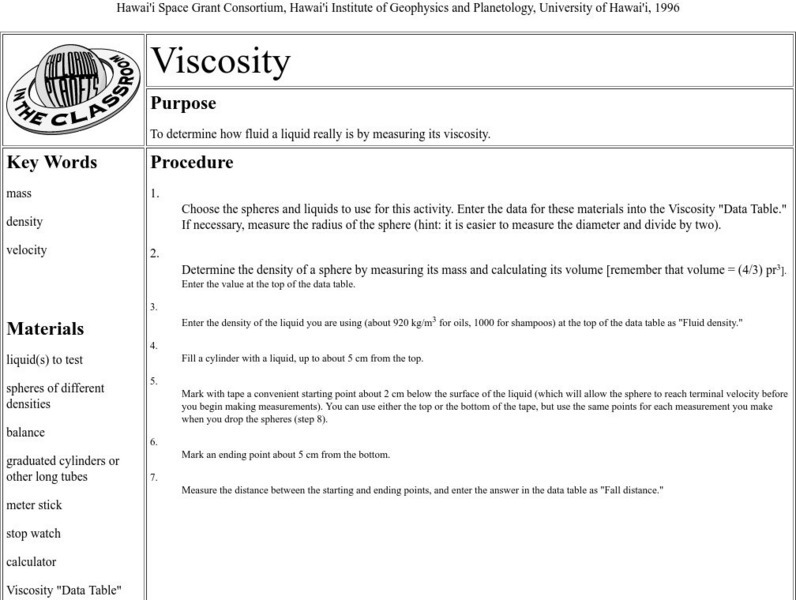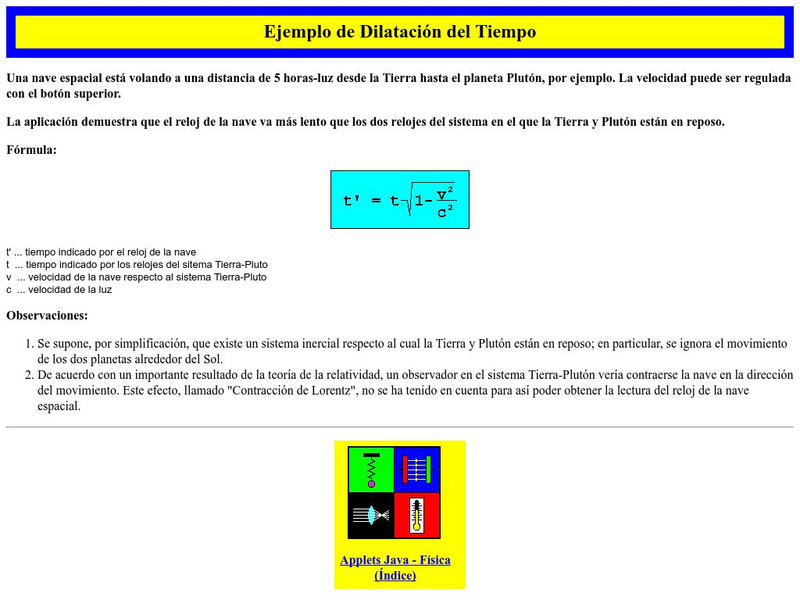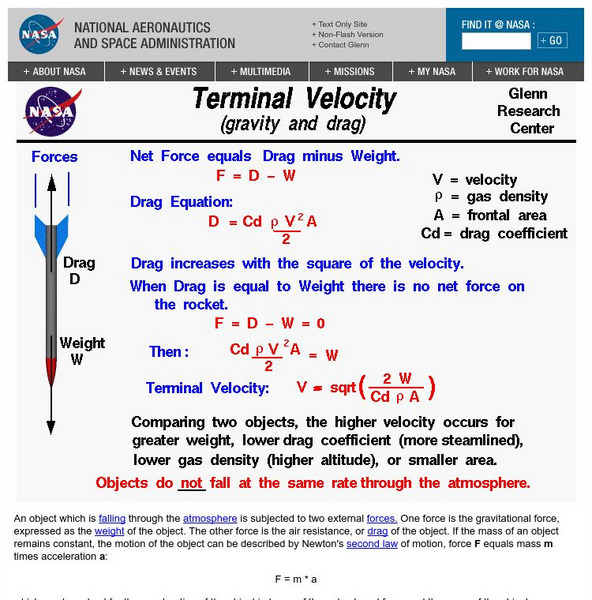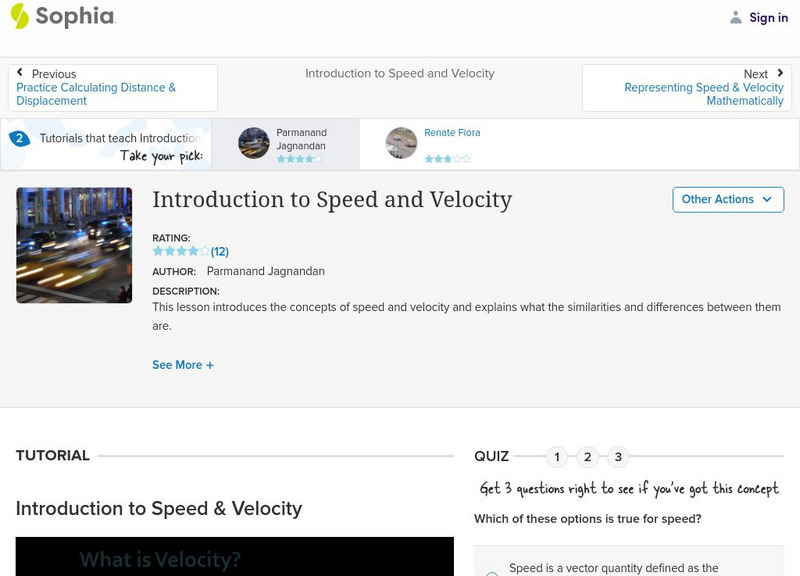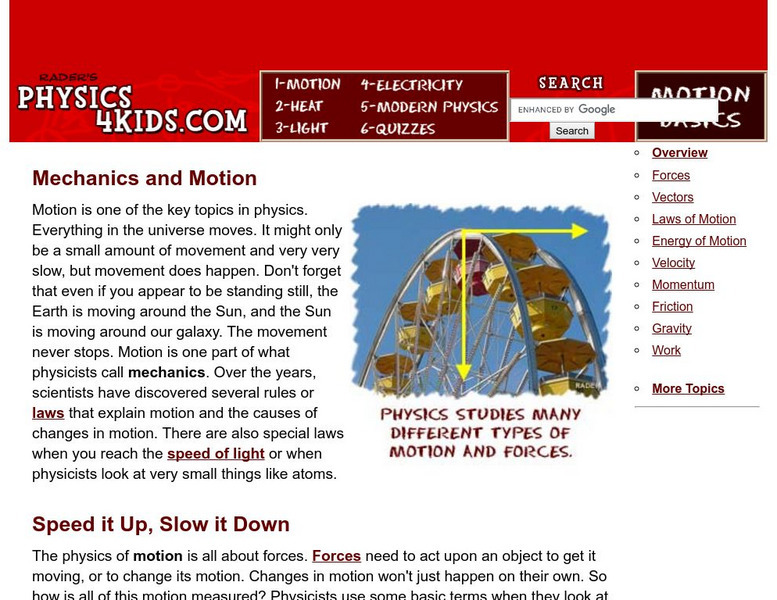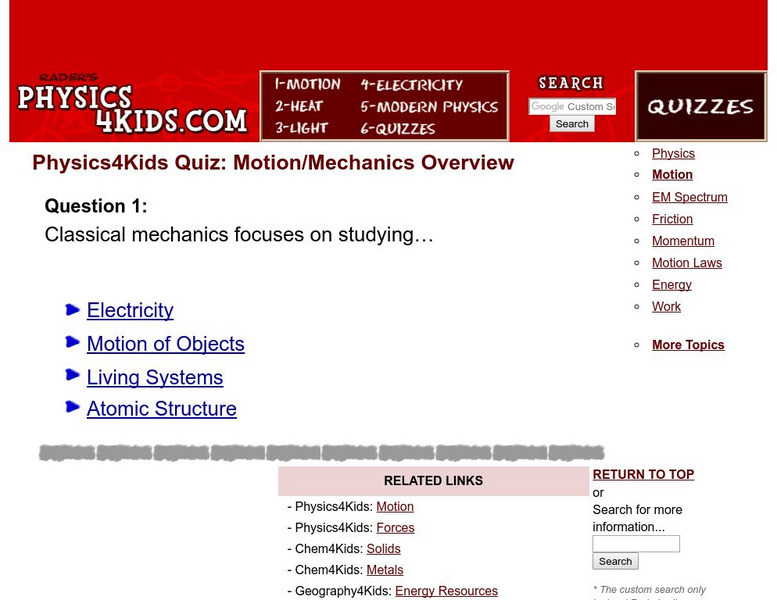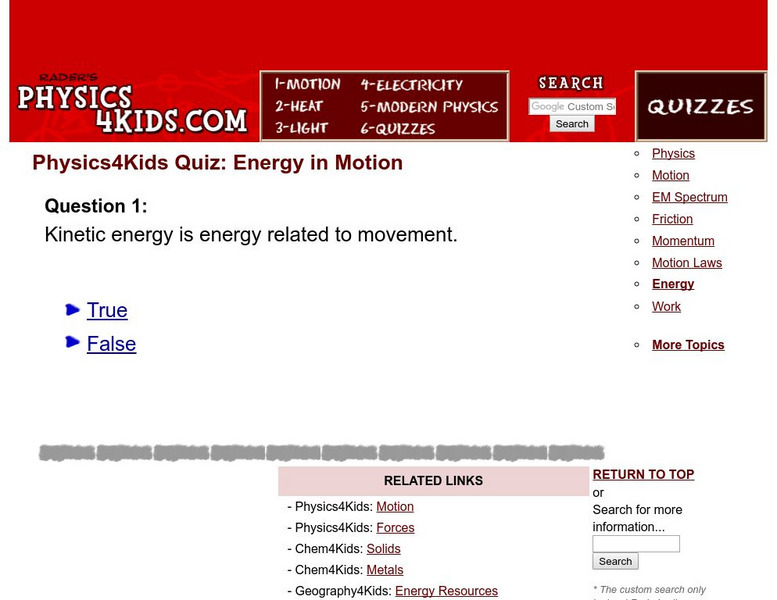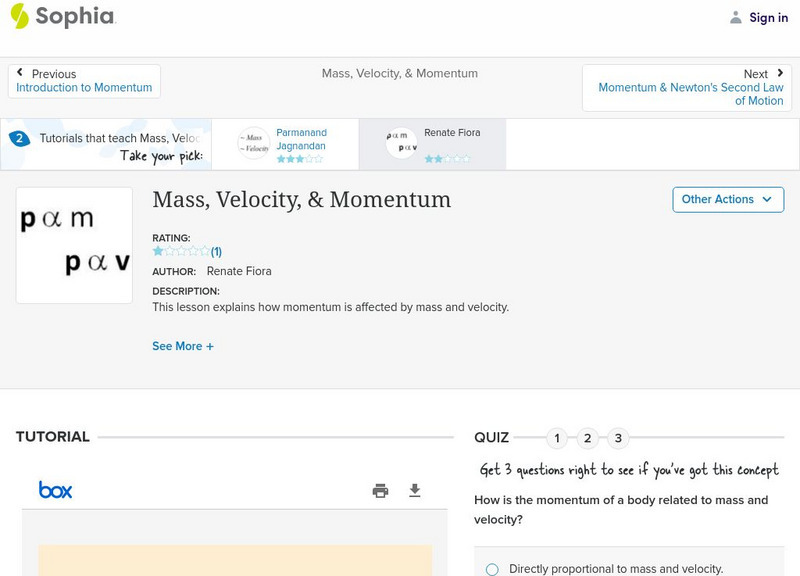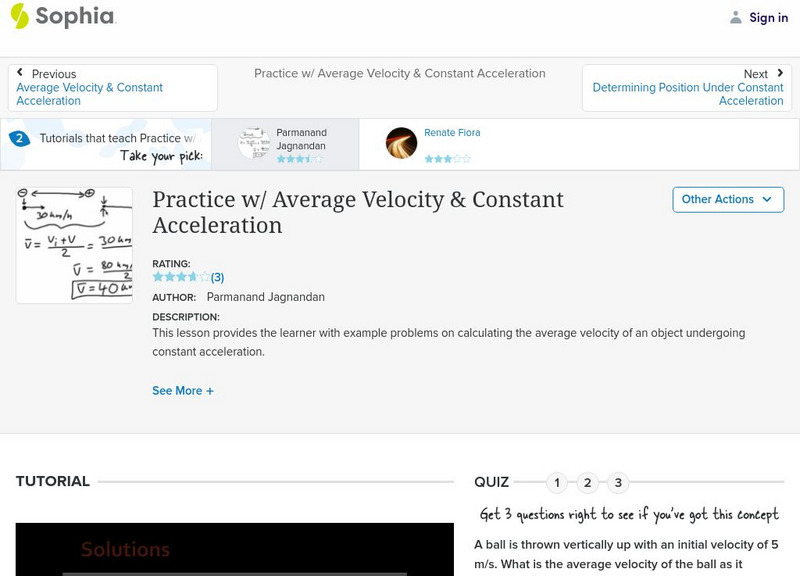University of Oregon
University of Oregon: Experimental Instructions
Visit this summary of friction. Use the interactive JAVA window to run friction simulations.
University of Virginia
Uva: The Real World Air Resistance
A contrast of Galileo and Aristotle's view of inertia and motion. Describes air resistance force and how its reality seems to initially support Aristotle's view.
University of Hawai'i
The Hawai`i Space Grant Consortium: Viscosity Lab
This is a high school level laboratory exercise demonstrating the properties of viscosity. Standard classroom science are required to do this lab.
Other
Walter Fendt: Ejemplo De Dilatacion Del Tiempo
This simulation shows that the ship clock goes slower than the two clocks of the system Earth and Pluto. This site is best viewed with Internet Explorer.
NASA
Nasa: Beginner's Guide to Aerodynamics
This site from NASA uses a colorful graphic to illustrate why objects reach terminal velocity. Provides equation for the terminal velocity of an object. Graphic is accompanied by a simple explanation.
Middle School Science
Middle School Science: Motion Notes
Personal site in which a teacher outlines a unit on motion. Probes through topics such as average speed, velocity, acceleration, speed, deceleration, force and more.
Sophia Learning
Sophia: Defining Momentum Mathematically: Lesson 2
This lesson provides a mathematical relationship for momentum. It is 2 of 2 in the series titled "Defining Momentum Mathematically."
Sophia Learning
Sophia: Introduction to Speed and Velocity: Lesson 1
This lesson introduces the concepts of speed and velocity and explains what the similarities and differences between them are. It is 1 of 2 in the series titled "Introduction to Speed and Velocity."
Sophia Learning
Sophia: Momentum: Lesson 2
This lesson will introduce the concept of momentum, explaining what it is and how it can be calculated by using an object's mass and velocity. It is 2 of 4 in the series titled "Momentum."
Sophia Learning
Sophia: Momentum: Lesson 4
This lesson will introduce the concept of momentum, explaining what it is and how it can be calculated by using an object's mass and velocity. It is 4 of 4 in the series titled "Momentum."
Sophia Learning
Sophia: Velocity: Lesson 3
This lesson will introduce the concept of velocity, explaining what it is, how it is calculated, and common units used to represent it. It is 3 of 3 in the series titled "Velocity."
Physics4kids
Physics 4 Kids: Mechanics and Motion
Motion is one of the key topics in physics. Everything in the universe moves. It might only be a small amount of movement and very very slow, but movement does happen. Don't forget that even if you appear to be standing still, the Earth...
Physics4kids
Physics 4 Kids: Motion/mechanics Overview Quiz
Take this ten question multiple choice quiz on motion and mechanics.
Physics4kids
Physics 4 Kids: Laws of Motion Quiz
Take this ten question multiple choice quiz on laws of motion.
Physics4kids
Physics 4 Kids: Energy in Motion Quiz
Take this ten question multiple choice quiz on energy in motion.
Sophia Learning
Sophia: Calculating Acceleration: Lesson 5
This lesson will explain that acceleration can be calculated by taking change in velocity divided by change in time. It is 5 of 5 in the series titled "Calculating Acceleration."
Sophia Learning
Sophia: Mass, Velocity, & Momentum: Lesson 2
This lesson explains how momentum is affected by mass and velocity. It is 2 of 2 in the series titled "Mass, Velocity, & Momentum."
Sophia Learning
Sophia: Practice W/ Average Velocity & Constant Acceleration: Lesson 1
This lesson provides the learner with example problems on calculating the average velocity of an object undergoing constant acceleration. It is 1 of 2 in the series titled "Practice w/ Average Velocity & Constant Acceleration."
Ducksters
Ducksters: Physics for Kids: Acceleration
Kids learn about acceleration in the science of physics and the laws of motion including units and measurement. How to calculate it from the change in velocity over the change in time.
Ducksters
Ducksters: Physics for Kids: Kinetic Energy
Kids learn about kinetic energy in the science of physics. The energy of motion can be calculated using mass and velocity. The standard unit is the joule. How it is different from potential energy.
Ducksters
Ducksters: Physics for Kids: Momentum and Collisions
Kids learn about momentum and collisions in the science of physics and the laws of motion including units and measurement. Calculate momentum using mass times velocity.
Ducksters
Ducksters: Physics for Kids: Speed and Velocity
Kids learn about speed and velocity in the science of physics and the laws of motion including units and measurement. What is the difference between speed and velocity?
Learn AP Physics
Learn Ap Physics: Physics B: Modern Physics
A site dedicated to help students prepare for the AP Physics B test. This specific site reviews Modern Physics including photons, photoelectric effect, atomic energy levels, The Michelson-Morley experiment, The Lorentz Transformation,...


